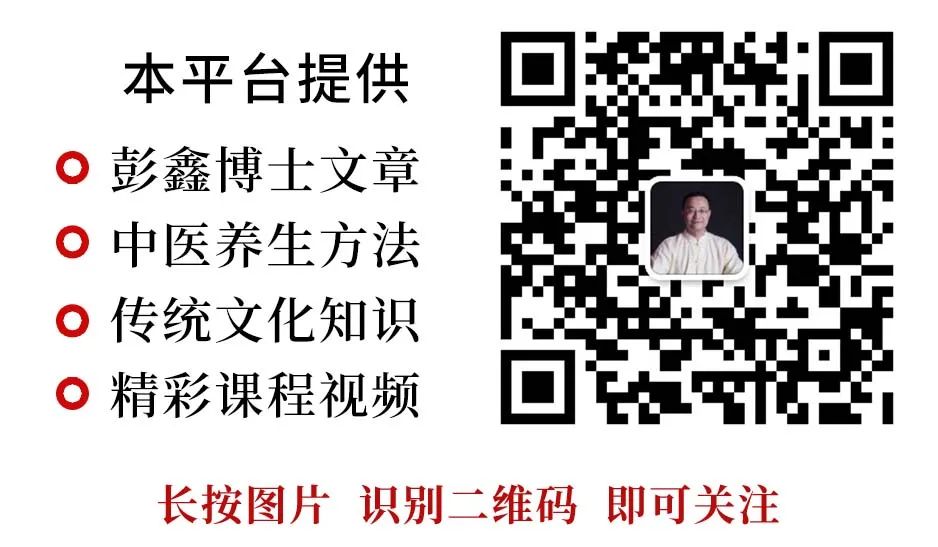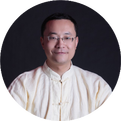↑Click the card above to follow me↑
【This article is: Dr. Peng’s Lecture Series on the “Huangdi Neijing” (with audio) – Essence Edition – No. 498 (More exciting content is continuously updated…)】
“The size of the pulse, whether it is slippery or rough, floating or sinking, can indicate different conditions. The manifestations of the five organs can be inferred. The sounds of the five organs can be perceived. The subtle diagnosis of colors can be observed. When the pulse and color are in harmony, one can achieve completeness.”——”Huangdi Neijing·Wuzang Shengcheng Pian”
(Continuing from the previous text) We see that “when the pulse and color are in harmony, one can achieve completeness.” The combination of color and pulse leads to a very thorough and complete diagnosis of the disease. Zhang Jiebin commented in “Leijing·Pulse and Color” that “by observing the pulse, one can understand the internal conditions; by observing the color, one can assess the external manifestations. When the pulse and color are clear, there are no omissions; when both internal and external are clear, the condition is fully revealed, thus achieving completeness without error.” Through the pulse, we can understand the issues of the internal organs, and through the color, we can verify the external manifestations of the five organs. The confirmation of both is called “when the pulse and color are clear, there are no doubts.” This means that whether it is the pulse or the color, when both confirm each other, the disease cannot hide, and it will definitely be clear and transparent. Therefore, “when both internal and external are clear, the condition is fully revealed.” This way, we understand the internal issues and the external manifestations. Thus, this type of diagnosis “can achieve completeness without error,” meaning it is foolproof.In clinical practice, we not only consider the pulse and color, which are certainly the two most important aspects. Most of the time, we observe (望), and the second is to listen (听). We must listen to the patient’s voice, how they speak, whether their logic is strong, and whether their language is coherent; all of this needs to be listened to, which is called “wen” (闻). We ask about their situation, their symptoms, “the first question is about the head and body, the second question is about sweating,” etc., as per the “Ten Questions Song,” asking about changes in the body.“Qie” (切) refers to pulse diagnosis, measuring the cun, guan, and chi positions, floating and sinking to assess the pulse. In ancient times, it was also necessary to feel the pulse at the foot’s fu yang point and the neck’s renying pulse. During the Han Dynasty, abdominal diagnosis was performed, which involved feeling the temperature of the abdomen, its softness and hardness, and checking for nodules or masses. Many patients need to lie down, and upon palpating their abdomen, one might find a particularly large mass inside, which may not show up on an ultrasound, but they feel a lump there; when you palpate, nothing is found, which is called Qi stagnation.I have encountered several cases in my clinic where the main complaint is a hard lump in the abdomen, which becomes particularly hard when consuming cold foods. When the weather is cold, the lump feels heavier, and when the mood is depressed, it becomes particularly large, blocking around the navel, sometimes on the left, sometimes on the right, always at a specific point. Then, what medicine should be prescribed? Prescribe warming Yang, moving Qi, and tonifying deficiency medicines; these three must be combined for the prescription to be effective.On one hand, warming Yang is essential; generally speaking, this condition is due to cold accumulation, as cold tends to constrict. When there is sufficient cold, it draws inward, and those with heavy cold tend to have their intestines and stomach contract inward. In cold winter conditions, if a person is outside resisting the cold, they do not expand their body; instead, they curl up. This is the nature of cold to constrict. Since this is the case, if there is cold in the intestines and stomach, it will draw inward, sometimes forming a hard lump that feels firm to the touch; this is the manifestation of cold. (Please follow WeChat: pengxinboshi) To treat cold, one must use warming Yang and Qi-moving herbs, such as Gan Jiang (Dried Ginger), Gui Zhi (Cinnamon Twig), and I also like to use Xiao Hui Xiang (Fennel) and Chuan Jiao (Sichuan Pepper) to warm Yang and move Qi. The second issue is Qi stagnation, which requires Qi to be unblocked, so we must use Hou Po (Magnolia Bark) and Chen Pi (Dried Tangerine Peel), and sometimes Fo Shou (Buddha’s Hand) and Xiang Yuan (Citron) to help move Qi. Additionally, many people experience fatigue, so we must also tonify deficiency. Many people ask if tonifying deficiency and moving Qi interfere with each other. It is important to note that tonifying deficiency and moving Qi do not interfere; do not think that tonifying deficiency will hinder Qi movement.Zhang Zhongjing treated this condition with the formula Hou Po Sheng Jiang Ban Xia Gan Cao Ren Shen Tang, which contains Ren Shen (Ginseng), but some prefer to use Gan Jiang (Dried Ginger) instead. In any case, I believe Sheng Jiang (Fresh Ginger) may be more effective, but sometimes in clinical practice, Gan Jiang is also used; ultimately, the choice of ginger should be based on the actual situation. Zhang Zhongjing used Hou Po Sheng Jiang Ban Xia Gan Cao Ren Shen Tang, which contains Ren Shen, known for tonifying deficiency and strengthening the spleen, so in this case, we must also tonify deficiency. If using Ren Shen, one can choose Dang Shen (Codonopsis) or Ren Shen (Ginseng), and some may opt for Hong Shen (Red Ginseng). For those with insufficient external Qi, adding Huang Qi (Astragalus) will yield even better results.I previously treated a patient who particularly enjoyed drinking Huang Qi Da Bu Tang (Astragalus Great Tonifying Decoction), which he named himself, as it contains a significant amount of Huang Qi, using sixty grams of Huang Qi. After drinking it, he felt revitalized, with sufficient Qi and blood. Why is that?When it is time to tonify, one must do so; if one does not tonify when needed, Qi will never rise.When using Huang Qi, it is essential to pair it with Qi-moving herbs; if you do not use Qi-moving herbs, it can easily lead to stagnation. Since we are tonifying the external Qi, we should also use some herbs that support the exterior, such as Chai Hu (Bupleurum), Fang Feng (Siler), Jing Jie (Schizonepeta), and Su Ye (Perilla Leaf). After using these, Qi will be thoroughly supplemented; not only will the internal organs be nourished, but the exterior will also be supported. Once this is achieved, the complexion improves, becoming rosy, and spots fade, because when Qi flows, blood flows; when blood flows, the complexion improves, and the skin becomes fair, and spots fade. This is the principle that the tangible blood cannot be quickly generated, while the intangible Qi must be urgently secured. Why does the Dang Gui Bu Xue Tang (Angelica Blood-Tonifying Decoction) primarily use Sheng Huang Qi (Fresh Astragalus) and less Dang Gui (Angelica)? It is because we first tonify Qi before addressing blood.Qi leads blood; once Qi is sufficiently supplemented, blood will naturally follow.The segment I just discussed is intended for our TCM colleagues or students who have just started studying Chinese herbal medicine; it will certainly help you understand the study of formulas and Chinese herbs. The cases I mentioned are practical clinical experiences that can assist everyone in understanding these clinical issues. However, for the general public, if you do not have a background in TCM and are not a professional, especially if you are just an enthusiast, it is best to listen without attempting to apply it. You must not say, “I heard Dr. Peng say to use sixty grams of Huang Qi, so I will take sixty grams myself.” This could lead to incorrect usage, as you may not be that deficient, and it could cause problems. Therefore, I kindly remind everyone not to take what I mention in my lectures and use it at home; I do not particularly advocate this, as you are not a TCM professional and have not systematically studied TCM. In this case, you must not simply use what you hear; it is essential to apply it under the guidance of a professional.This is the meaning of the earlier statement, “the subtle diagnosis of colors can be observed, and when the pulse and color are in harmony, one can achieve completeness.”Alright, today’s lecture ends here. Thank you all for listening, and see you next time.This article is: Dr. Peng’s Lecture Series on the “Huangdi Neijing” (with audio) – Essence Edition – No. 498. (More exciting content is continuously updated…) Disclaimer: This article is for health knowledge sharing. The medications, prescriptions, acupuncture, and various treatment and wellness methods mentioned should be applied under the guidance of a professional physician. Do not use them independently. We are not responsible for any issues arising from improper use.Copyright Statement: This article is authored by Dr. Peng Xin, and is an original article. Unauthorized reproduction or citation is prohibited.(Copyright belongs to the original author, and all legal rights are reserved)Recommended Reading
Follow the “Dr. Peng Xin TCM Studio” Public WeChat Account, reply with the number 2022 to view popular reading collections.
[With Audio] Dr. Peng Xin explains the “Moxibustion Health Preservation” series of courses
[With Audio] Dr. Peng Xin discusses “Health Preservation in the Twenty-Four Solar Terms”
[With Audio] Dr. Peng Xin discusses the essence of the “Huangdi Neijing” series
[State Council Information Office] Dr. Peng Xin: The ultimate point of integration between Chinese and Western medicine lies in clinical practice
[Tsinghua University] Dr. Peng Xin’s public lecture – Modern Insights from Pengzu’s Health Preservation Philosophy
[Baduanjin Complete Collection] Health Preservation Techniques – Dr. Peng Xin presents you with a gift
An important cause of obesity (including solutions)
“Winter Solstice” brings forth Yang; the correct health preservation method is as follows
[Video] Vortex Gathering Energy: The Method of Ascending Clarity and Descending Turbidity
[Health Preservation] Two Blood-Tonifying Formulas Suitable for Women
[Exciting Recommendations] Since eating vegetarian is so good, why is your body still so poor?
Dr. Peng Xin TCM Studio
WeChat Public Platform: pengxinboshi

Official Website: www.pengxinboshi.com
Sina Weibo: @Dr. Peng Xin TCM
Tencent Weibo: @Dr. Peng Xin TCM
Dr. Peng Xin’s Clinic Appointment and Lecture Invitation Methods
↓ ↓ ↓
Appointment Method: Click here for detailed information

